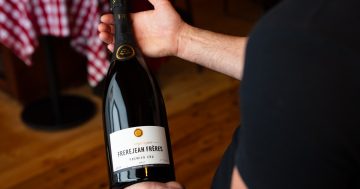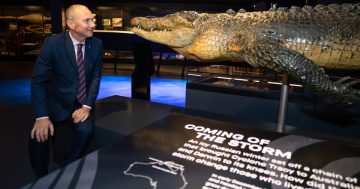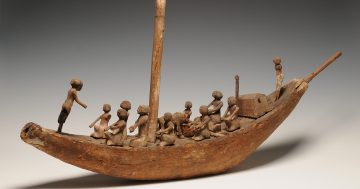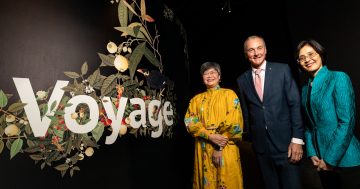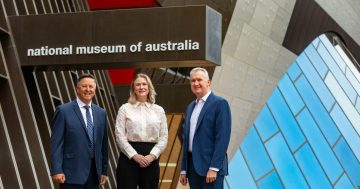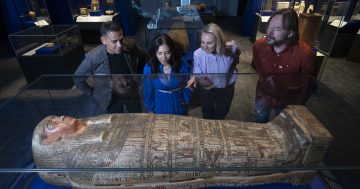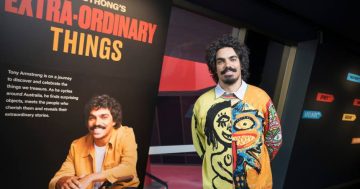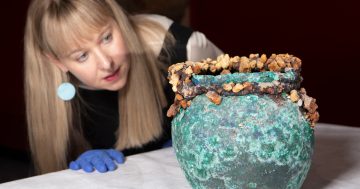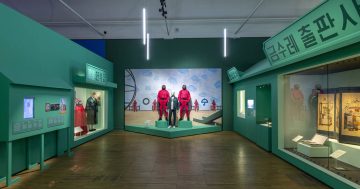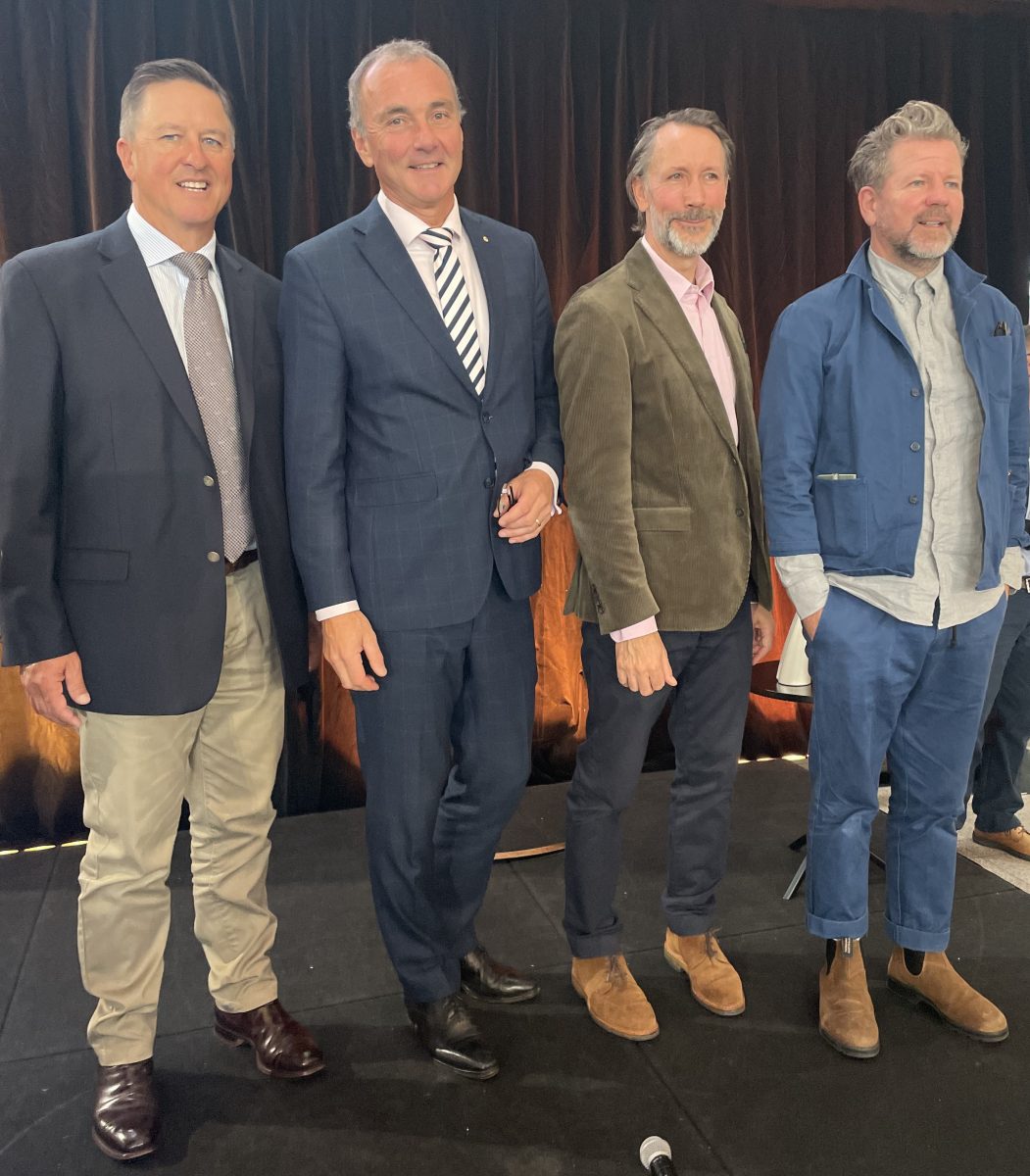
Chair of the National Museum of Australia Council, Ben Maguire, director Matthew Trinca, exhibition curator, Adjunct Professor Lyndon Anderson and design enthusiast and media personality, Tim Ross at the launch of Material World. Photo: Sally Hopman.
When you think of grand designs, those old school demountables rarely cut it.
The usually grey, lumpy things that can look like they’re made from giant plastic building blocks would be revered, if at all, for their ability to house children from overcrowded schools rather than any design charms.
Not so if you are a passionate design fan, ABC TV personality and comedian Tim Ross – and especially if you are officially opening the National Museum of Australia’s (NMA) latest exhibition, Material World.
Demountables, he told guests at the NMA on Thursday (11 May), were the brainchild of the government architect back in the day and the “unrecognised classics” of Australian design.
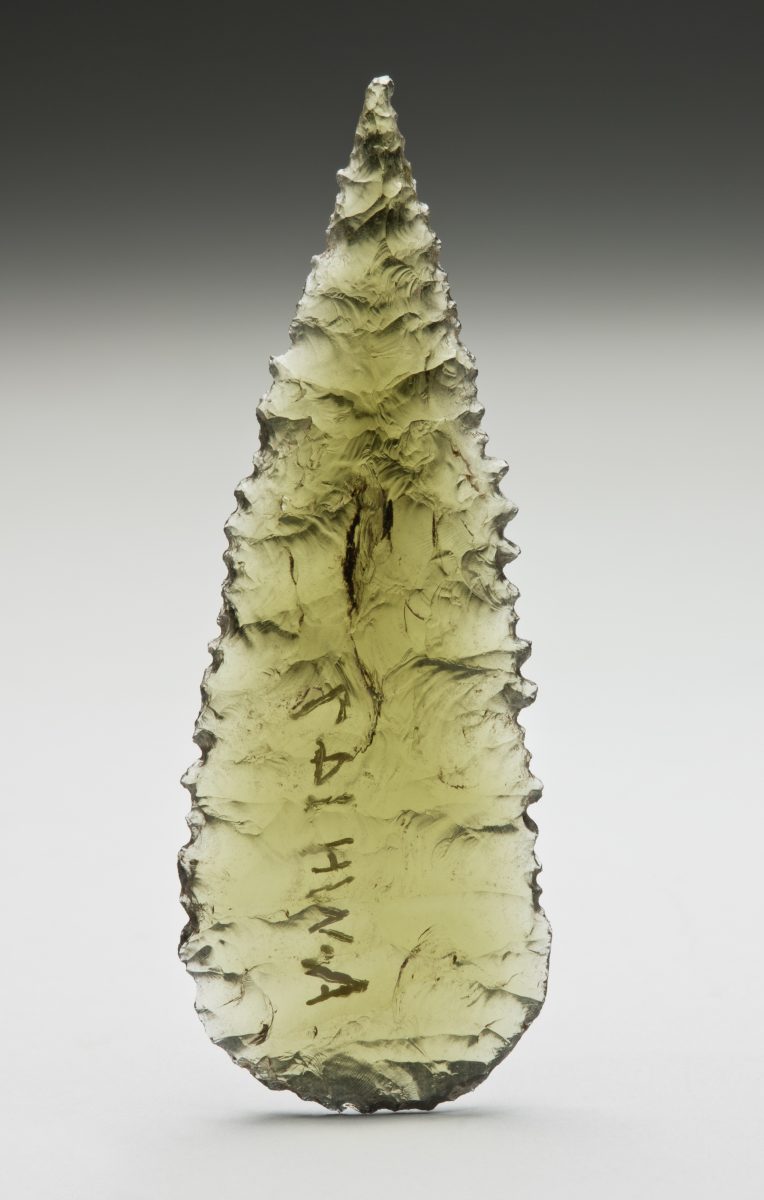
A clear green glass First Nations Kimberley point or spearhead, bifacially flaked with serrated edges, is featured in Material World. Photo: NMA.
“They are just wonderful,” he said. “They are important to us today because we have all been in one.
“To me, that’s what design is all about. I love the stories that come out of design … it’s like when we elevate an object that tells us a story. It’s all those ooohs and aaahs that drive us.”
He said one of his proudest moments was to convince an ABC TV producer to include a demountable in a series he was doing about Australian design.
“They are so important in our history,” he said. “They were designed to be indestructible, to be dropped off a crane if necessary – they should outlive us and they have. Their story remains forever.”
NMA director Mathew Trinca said Material World was designed “to challenge its audience to reconsider the meaning of good design”.
“It grapples with social, cultural and environmental perspectives – themes also explored in the museum’s permanent galleries,” he said.
“It presents a unique opportunity for visitors to see the critical function design has played in shaping our society.”
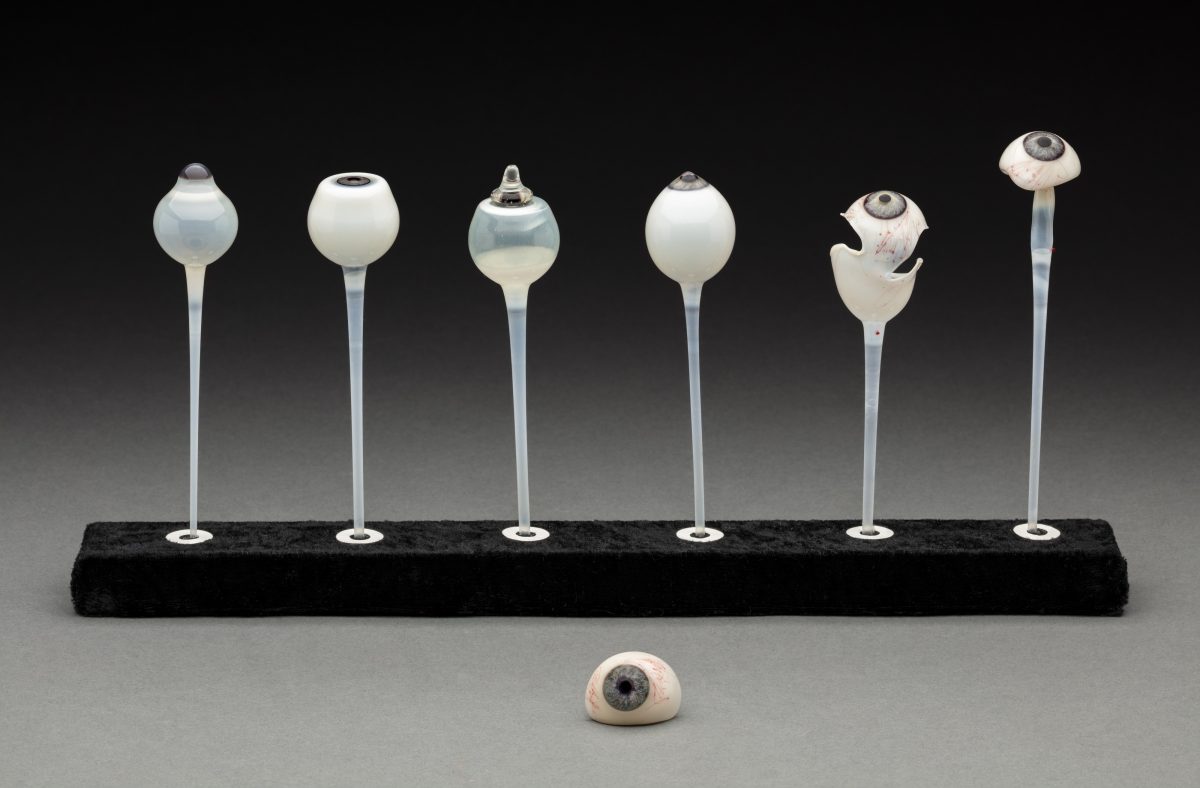
The new Material World exhibition focuses on great design, including this set of seven green glass eyes at various stages of completion. Photo: NMA.
Dr Trinca said one of his favourite objects in the exhibition of more than 60 pieces was a glass Kimberley point – an Indigenous spearhead. Traditionally made from stone and used for the tips of spears and as exchange items, the exhibition piece is made from an old glass bottle.
“It shows how thousands of years ago, how the human hand was used to make decisions that suited the nature of that life,” he said, adding it was strange that even though the NMA had amassed such a large collection – more than 250,000 pieces – it was only now a design lens had been taken to it.
“Design is here – it’s in everything,” he said.
Developed in collaboration with the Swayn Gallery of Australian Design, the exhibition looks at the history and complexity of human design by showcasing traditional materials and new technologies with objects from research centres, designers and the NMA collection.
Exhibition curator, Adjunct Professor Lyndon Anderson, who is also Swayn Senior Fellow in Australian Design at the NMA, said the exhibition could be seen as a whole or as five smaller exhibitions, each focusing on a different material – “and how its use has evolved from First Nations applications to outer space exploration.
“In the past, the natural properties of a material determined how people would use it,” he said. “With the advent of new technologies, the properties of materials can be altered to suit our needs.
“We can now design the object, technology and the material.”
Chair of the Swayn Gallery of Australian Design, Annabelle Pegrum AM, told the gathering the exhibition, Material World, had nothing to do with Madonna, nor the song – it was “much better”.
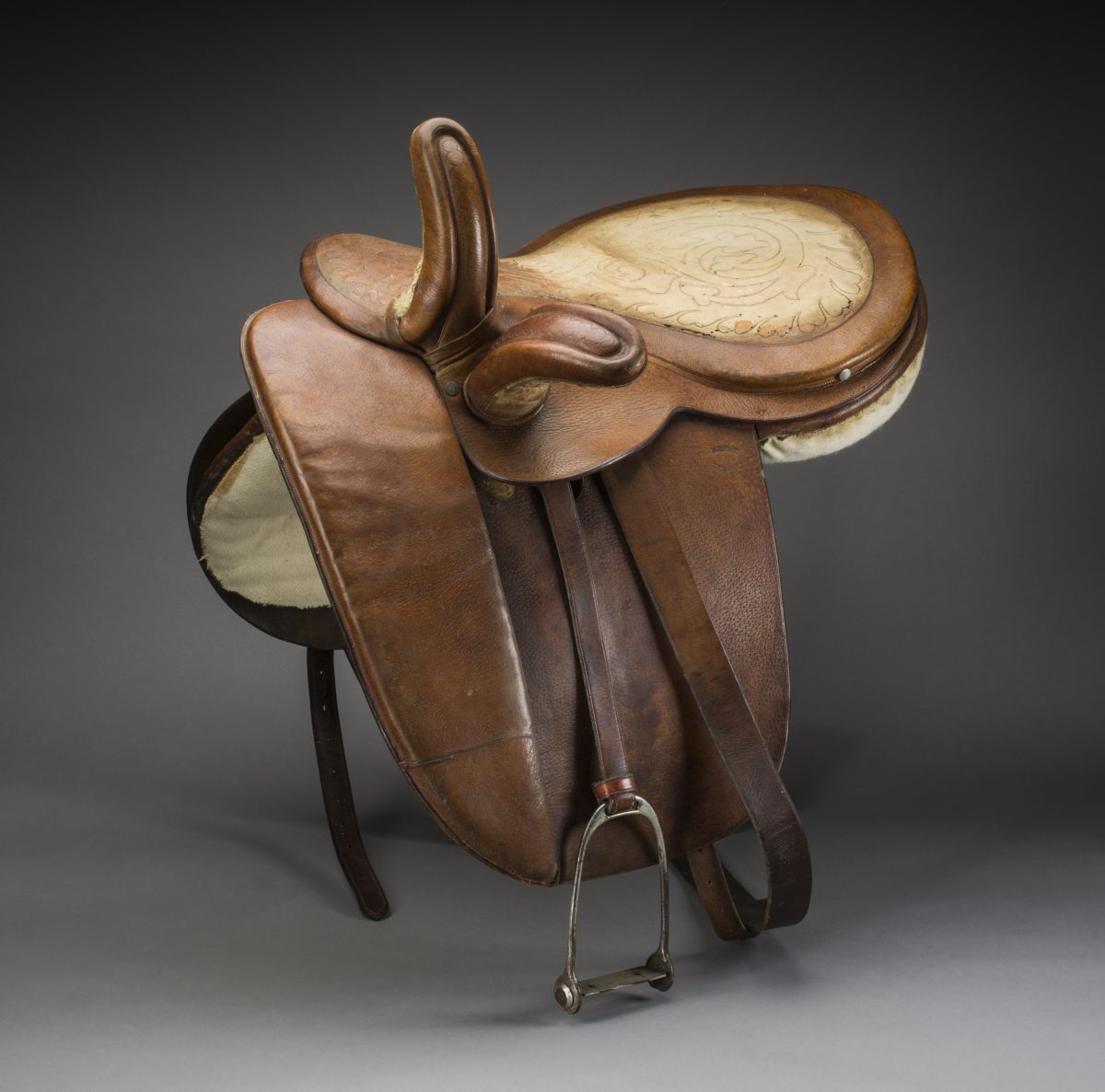
A tan-coloured leather side-saddle with decorative stitching on the seat used by Constance Faithfull in 1877. The Faithfulls were a well-known Goulburn family, living on the Springfield property. Photo: NMA.
She said the exhibition was a testament to the importance of design and good design principles.
“The objects explored in this exhibition and the approaches to their design allow us to reflect upon and explore ourselves,” she said.
Other items on display include a leather side-saddle, made in 1877 by George Street and belonging to Constance Faithfull who would have used it on the family property, Springfield, near Goulburn; and a surfboard made from wood by Sine Surf designers Emile Theau and Alastair Pilley who wanted to alleviate the use of harmful materials such as plastic-based foams and fibreglass from surfboards.
Material World will be on display in the Gandel Atrium of the NMA until 15 April, 2024. Open daily. Free.











